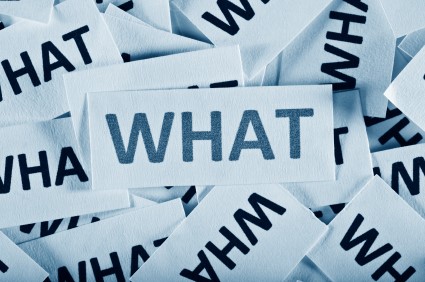
As a child, we learn to ask “Why?” questions. Children are forever stringing together a series of “But why?” questions to their parents’ frustration, as they do not know the answers. This childhood approach gives rise to one of the more powerful and simple tools in analysing problems, the “Five Whys” technique.
However, there is an even more powerful questioning set. It does not promise to uncover the root cause of a problem in five questions. What it does do is make it almost impossible for the person being asked the questions to feel any umbrage and gets to the core of issues.
The technique is to use “What” questions. It is not unlike the “Five Whys” technique, but has some advantages.
Why Questions
In the “Five Whys” technique, the questioner asks up to five questions to get to the root cause of a problem. Consider this string of questions, for example;
“Why did we receive so many complaints about deliveries last month?”
“Because we reprioritised the orders every morning pushing some deliveries past their agreed delivery date.”
“Why did we reprioritise the orders?”
“Because the sales manager directed dispatch to do so.”
“Why did the sales manager order dispatch to reprioritise orders?”
“Because the promotional orders weren’t available last week when they should have been and they now became very urgent to get out.”
“Why weren’t the promotional orders available?”
“Because we did not know about the promotion”
“Why did we not know about the promotion?”
“Because operations are not included in the promotional planning meetings; only sales and marketing.”
After the initial “Why” question which gives an answer:
“Because of <some action> or some <object>”,
the next question takes the form:
“Why did the <some action> or <some object> occur?”
What Questions
When using “What” questions, the form of the questions is similar.
The initial “What” question, is of the form of “What caused you to miss training?”
To which the reply may be:
“Because my alarm clock did not go off.”
“What caused your alarm clock not to go off?”
“Because I forgot to set it.”
“What happened to cause you to forget to set it?”
“I just forgot.”
“What might you be able to do to not forget in the future?”
“I don’t know.”
“What is it about forgetting to set your alarm clock that you do not know about?”
“I don’t know how to help myself remember to set the alarm clock.”
“What other things do you remind yourself of to remember?”
“I create lists for everything else.”
“What would happen if you put set the alarm clock on your list?”
“I’d probably forget to check the list.”
“What could you do to the part of the list about your alarm clock and where could you put it so as to never miss it?”
“Write in big bold letters and put it on my pillow.”
What questions are extremely powerful in that they always ask for facts.
When “What?” is better than “Why?”
Open questions have a natural hierarchy. What, when and where questions ask for facts. Who and how questions ask for facts but also ask me to reveal something of myself in terms of my values. For example, “Who was I with” and “How did I do it?”
“Why” questions, particularly if the sentence contains the word “You”, ask me direct questions the answers to which relate to my values. For example, “Why did you stay out late last night?” The answer to which most times is unintelligible or unsatisfactory, such as “I don’t know, I just did”. Asking further “Why” questions of this form do not get us any further and may sound like the inquisition we gave our parents as a child.
What questions, on the other hand, can be phrased with the word “You” in them without causing the questioned party to feel like they are being interrogated. For example, “What caused you to be out late last night?”
“I don’t know, I just did.”
“What is it that you don’t know?”
“I don’t know, I guess I was just enjoying myself”
“What were you enjoying?”
“People’s company I guess, it was good to be with my mates for a while.”
All open questions can be transformed into “What?” questions; “What place?” What time?”, What people?”, “What was done?” and “What caused…?”
Skilfully used, what questions are unobtrusive yet penetrating, making it almost impossible for the individual receiving them to answer without feeling pressured.







